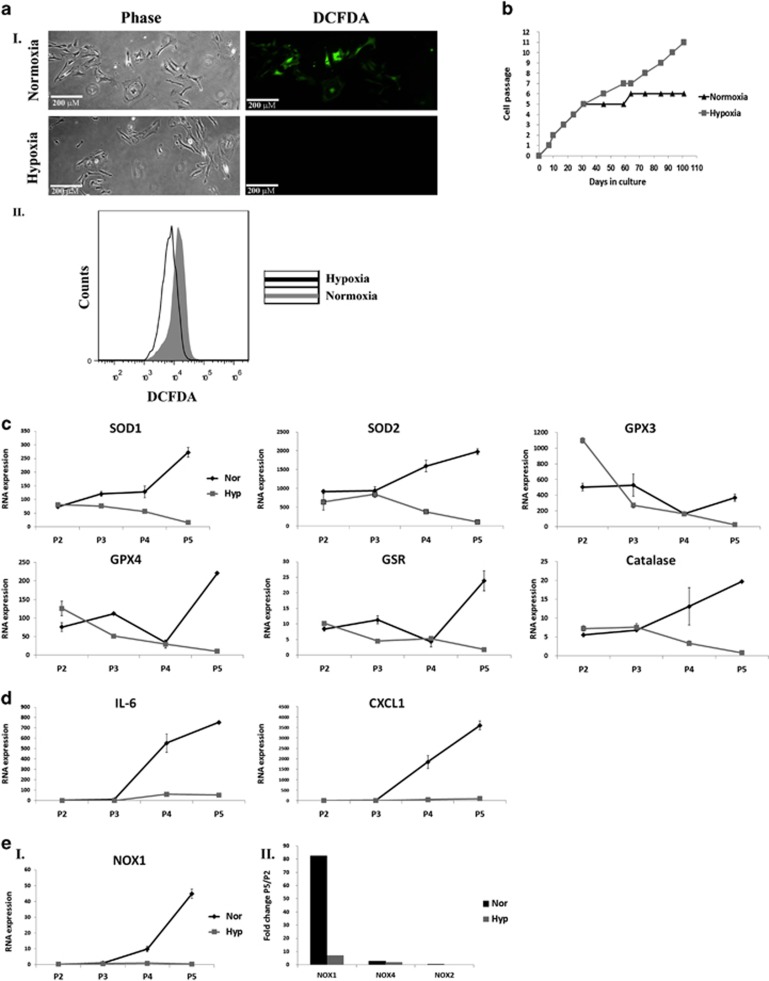Figure 3.
Hypoxic conditions (3% oxygen) inhibit ROS accumulation by abdominal ASCs and allow their long-term propagation. Abdominal fat was isolated and ASCs were propagated under ‘normoxic' conditions (21% oxygen) or hypoxic conditions (3% oxygen). The following analyses were performed on aASCs that were grown under different oxygen conditions. (a) ROS accumulation was detected by DCFDA staining and analyzed by fluorescence microscopy or by FACS (fluorescence-activated cell sorting) (aI and aII, respectively). (b) Growth curves of aASCs cultured at 3% oxygen (gray line) and 21% oxygen (black line). Only cells that were cultured at 3% oxygen were able to undergo long-term expansion. (c and d) RNA expression of various genes was compared by quantitative reverse transcription-PCR (qRT-PCR) analysis between cells that were grown under hypoxic conditions (gray line) to those grown under normoxic conditions (black line) at the indicated passages. (e) The expression of NOX1, NOX2 and NOX4 were evaluated in cells that were grown under hypoxic (gray) or normoxic (black) conditions by qRT-PCR. The expression is presented as RNA expression (eI) or as the fold of expression between passage 5 and 2 (eII). Error bars represent S.D. Results were repeated two times following the same trend

